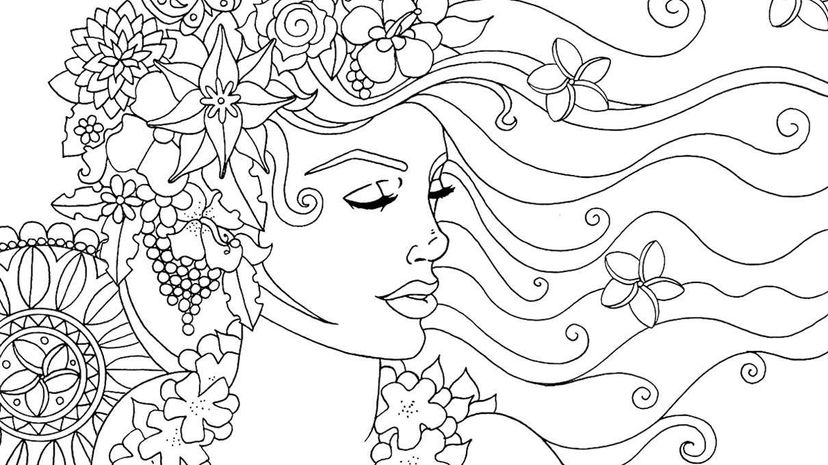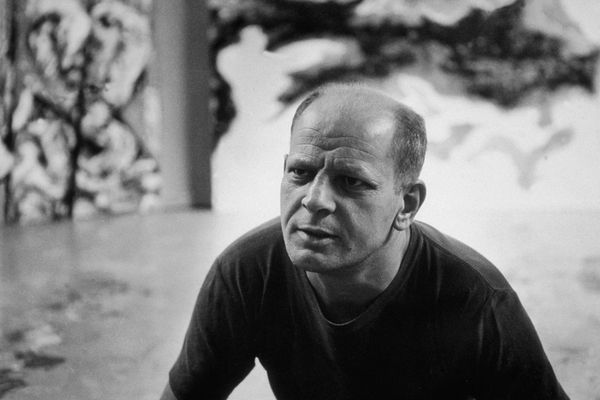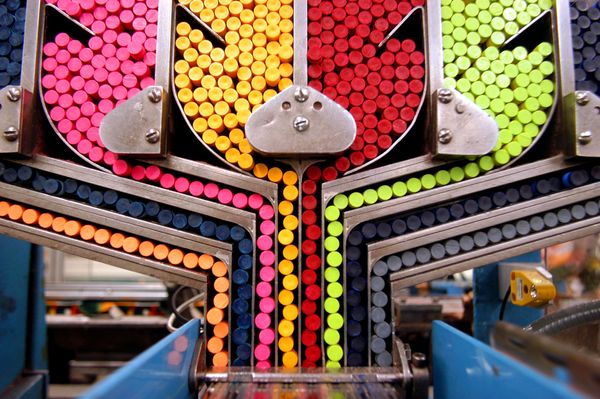
"I'm simply building the sandbox for someone else to play in," says artist EC Steiner about his work on adult coloring books.
You're probably familiar with these sandboxes. According to Publisher's Weekly, the most popular adult coloring books had already sold more than 1.5 million copies by November 2015. By December, five of Amazon's top 10 best-selling books were adult coloring books. Now George R.R. Martin is working on an official "Game of Thrones" coloring book, and there's even a National Coloring Book Day (Aug. 2) all of a sudden.
Advertisement
Much of the coloring book coverage has followed two themes. First, they're marketed as therapeutic, meditative stress-reducers. Or, as Steiner puts it, "If the best way to put something out of your mind is to focus on something else, a coloring book is a good way to go about it." Second, these books are used as evidence for the "Peter Pan" effect, where adults regress into "childish" activities to escape from modern life. Playing in a sandbox as it were.
There are also plenty of reminders that adult coloring books aren't exactly new. In The New Republic, Laura Marsh recalls the satirical, subversive coloring books from the 1960s that point the finger "Mad Men"-style at dysfunctional American culture. They largely disappeared by the 1970s, but still made millions for their publishers. In contrast, today you'll find a few political humor coloring books poking fun at the 2016 U.S. presidential candidates, but for the most part the themes are much tamer.
In fact, most current adult coloring books feature pattern designs of animals, plant life or cultural traditions. Franchises also are getting in on the action, so now you've got "Star Wars," "The Hunger Games" and Marvel Entertainment producing their own books. But even those tend to resemble Johanna Basford's mandala-meets-nature style that became so popular with her best-seller "Secret Garden: An Inky Treasure Hunt and Coloring Book."
Anastasia Catris, who has produced nine adult coloring books, says that since her books' focus was "losing yourself in intricate pattern work and relaxing imagery," she always tried to choose fitting content. After gathering inspirational ideas from Pinterest, Catris thumb-nailed out each page and developed them with repeated images and symmetrical patterns in the mandala style.
Her books' themes (like seasons, butterflies and dogs) were chosen by her publishers, but if there's an "Anarchist Cookbook," can't there also be an "Anarchist Coloring Book"? Possibly. Catris thinks there's a market for more subversive themes like a series of Dia de los Muertos style "sugar skull" books. She's hoping to self-publish her own horror-themed coloring books in 2016. Likewise, Steiner recently finished contributing to "The Occult Activity Book," saying the editors gave him the freedom to choose his subject and design approach.
But how do these artists create their patterns, mandalas and "swirling coilscapes" as Steiner calls them? Of course it all starts with simple pencil and paper. Basford, for instance, is committed to traditional drawing rather than digital. Catris also draws her pages by hand, while Steiner roughs his thumbnails out in pencil on a huge 14 x 17 inch (36 x 43 centimeter) sheet, scans it and then inks digitally in Manga Studio. Finishing his drawings this way with vector art allows publishers to scale the artwork depending on the book's print size.
The weight of each drawn line is an important part of the process as well. Basford inks with Steadtler pigment liners as small as 0.2 millimeters in width. Catris goes somewhere between 0.05 and 0.7 millimeters with her lines, using Uni-Pin Fine Liners. She recommends a uniform line width so the mandala imagery doesn't become too busy, defeating the coloring book's purpose of relaxation. While Steiner inks digitally, he too maintains a consistent line, purposefully using thick outlines for key elements in the foreground and thinner background sets so the main subject pops off the page. He borrowed this approach from the bizarre 1984 "DUNE Coloring Book."
Figuring out inventive ways to present illustrations is only the beginning of these books' artistic inspiration. So it's surprising that in a recent New Yorker article a psychologist found them to not be "an especially creative endeavor" and that they "barely qualify as playful."
Professional color artist Rico Renzi (who colors Marvel comics like "Spider-Gwen" and "Unbeatable Squirrel Girl" every month) argues that while it can be relaxing, there's also a degree of problem solving in coloring, like figuring out a puzzle. "Color can act like a score of a movie," says Renzi. For instance, if he's trying to convey a scary scene, he might tint everything red. But if an image is supposed to tug at your heartstrings, he'll use lots of blues.
Renzi's advice for coloring? "If everything is important then nothing is important." Using color skillfully can make things visually clear and pull your focus. Though Renzi also sees how "time plus fun art to color can equal Zen."
Maybe achieving this coloring Zen requires provoking thought and embracing playfulness? For his part, Steiner's excited about what's next with the coloring book trend.
He notes, "I'm most looking forward to seeing how people create unique, cohesive projects that expand the medium and continue to build a creative bridge between the artist and the audience."
Advertisement

